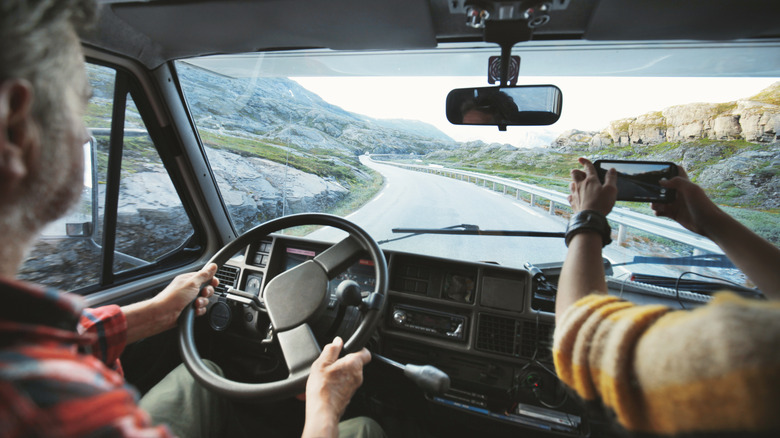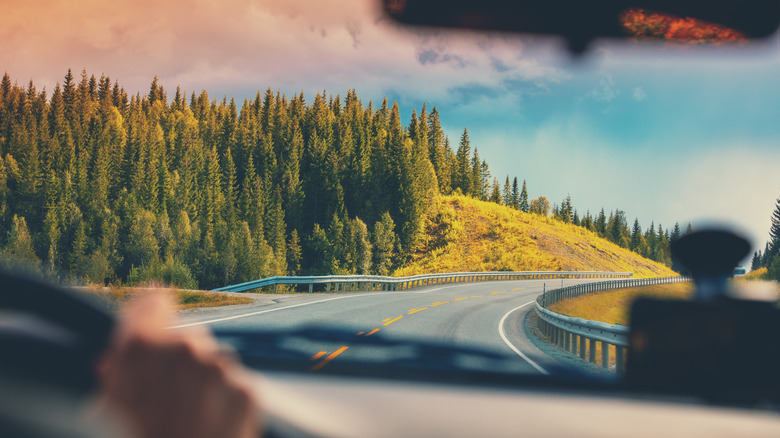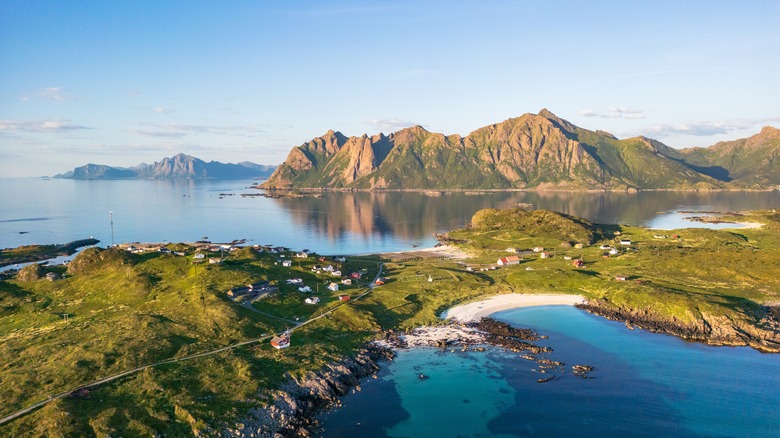Rick Steves Says Driving In Norway Can Be Dangerous. Here's Why
Norway's breathtaking landscapes and natural wonders are no secret to most avid travelers and wanderlusters. Drawing in millions of visitors each year, the Scandinavian destination is all about outdoor adventure and scenic beauty. From its majestic fjords and snow-capped mountains to lush forests and pristine coastlines, the country offers a visual feast at every turn. Because whether you're hoping to enjoy the perfect mountain escape at a national park, catch a glimpse of the Northern Lights, or even dine at a viral restaurant located in the middle of a fjord, Norway is ready to deliver.
That said, it's no surprise that Rick Steves — renowned travel expert and author — would hail Norway as a can't-miss destination. Describing it as "a land of intense beauty" on his blog, Steves highly recommends experiencing the country firsthand. However, when it comes to travel tips, like choosing whether or not to explore the destination by car, the author has one unexpected caution: Driving in Norway can get a little risky.
Don't worry, though — he doesn't mean dangerous road conditions. Instead, the real challenge is keeping your focus on driving — especially considering that first-time visitors and foreign drivers can get easily distracted by the awe-inspiring views. After all, and in his own words, when it comes to driving through Norway, "It's tough to keep your eyes on the road."
The dangers of driving in Norway
While Rick Steves' warning about driving distractions is certainly valid, it's easy to see why travelers might find themselves captivated. After all, Norway's landscape is a masterpiece in itself — and the country has actually managed to take things a step further with its 18 designated Norwegian Scenic Routes. Offering the perfect combination of nature, architecture, and design to create an unparalleled driving and tourism experience, these roads pass through some of Norway's most impressive vistas.
From the Andøya Scenic Route — which offers breathtaking mountain views, as well as glimpses of nearby beaches and coastal cliffs — to the Scenic Route Varanger — where avid birders can catch a glimpse of the country's Arctic species — Norway's most picturesque roads cover nearly 1,500 miles of pure scenic beauty. However, this doesn't stop at the road's edge. Featuring strategically placed viewpoints and art installations that complement the natural surroundings — and let you take in the sights without compromising your driving — these routes elevate the driving experience to an art form.
But beyond the landscapes, the true stars of Norway's Scenic Routes are its rest stop toilets. Yeah, you read that right. Primarily designed by local architecture firms, these roadside facilities are hailed for their unique designs and clever concepts. Plus, they're also not a bad place to stretch your legs (or answer nature's call) after driving for hours.
Navigating Norway's roads
While Steves argues that the scenery might be the biggest "hazard" for drivers in Norway, the truth is that there's really no need to stress about driving during your trip if you're prepared and cautious. That said, along with enjoying the breathtaking views responsibly, you'll also want to keep a close watch on road conditions and safety regulations — both of which can vary significantly, especially during the winter when snow and ice are to be expected. Worried about dealing with snow-covered drives? The best time of year to visit Norway for you and your party might just have to be during the longer, more sunlit days of summer.
Beyond that, in terms of infrastructure, Norwegian roads are also generally well-maintained and designed with safety in mind. For one, speed limits tend to be clearly marked and enforced — the national limit is actually set at 50 mph on most roads outside of town centers and residential areas — which helps contribute to the overall safety of drivers, passengers, and pedestrians alike. Other unique characteristics that might surprise you while braving Norwegian roads include the country's many tunnels — some of which even feature roundabouts or junctions inside them — as well as unexpected wildlife encounters and road closures, hefty toll fees, and even the occasional ferry ride.
Lastly, and per Steves' experience, although a few of the country's roads tend to be quite winding and narrow — especially if you're exploring more remote fjords or mountain passes — they also typically feature pullout areas so you can quickly let other vehicles pass you by. All so you can continue your journey — and treat yourself to a scenic pit stop, too.


